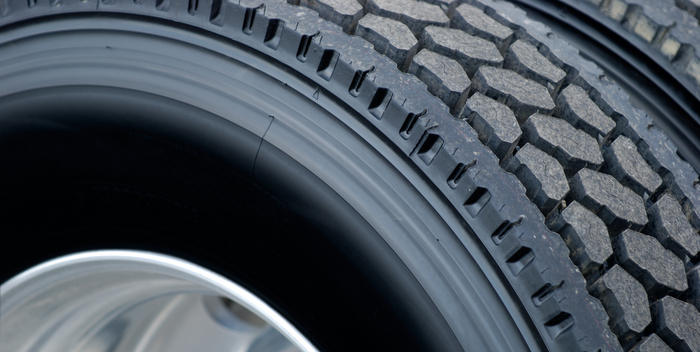Commercial fleets take tires and tire programs seriously. With the average price of a new tire in the $500+ range, tire-related expenses play a major role in a fleet’s bottom line. Being stuck on the side of a road waiting for a flat tire to be serviced is not just costing your fleet money—it is also a safety issue. Add in late fees for not arriving on schedule because of “just in time delivery” and the costs can add up quickly.
One way to reduce tire failures on the road is to ensure you have a good truck tire repair procedure in place. There is a big difference between stopping a leak in a tire due to a puncture and actually repairing the tire.
In an emergency situation, a tire leak can be stopped by pulling out the puncturing object and using some sort of “rope repair” to stop the leak for the moment. This is a temporary solution, as tires can only be repaired properly by first dismounting the tire from the wheel.
Some fleets do their own tire repairs, but most trucking companies rely on their local retreader to be their tire repair experts. A proper repair can provide significant tire removal miles and reduce the tire’s cost per mile.
Every fleet should create a tire repair specification based on historical data from tires run in its specific service vocation. Repair specifications are typically based on puncture size, number of punctures, crown area injuries, sidewall injuries and shoulder injuries. Some fleets may have performance data which indicates that two or three nail hole repairs will meet their specification. Other fleets could have data that shows that four repairs are acceptable as long as they are not too close together. There are no legal guidelines when it comes to repairing tires; however, there are recommended industry practices.
One example would be a two-piece nail hole repair in the crown area that is 3/8 in. or less. (An injury larger than 3/8 in. would require a more complicated section repair.) The proper repair is to:
- Remove the puncturing object and then use an awl to probe the hole and determine its size; use a carbide burr tool to prepare the injury.
- Precure rubber insets or stems can be used to fill the hole.
- Then use a nail hole rubber patch to seal over the hole. These rubber patches come in various sizes.
Once a proper nail hole repair is complete, the tire can be placed back into service.
It is important that technicians follow guidelines and use repair materials that are properly stored in a cool room—and that do not exceed recommended shelf life. Repair technicians should be properly trained by such organizations as the Tire Industry Association (TIA). TIA and the companies that manufacture tire repair materials all offer certification classes in the proper repair of radial truck tires.
Tires take a lot of abuse and are prone to puncture, especially when running underinflated. A tire that is supposed to be running at 100 PSI and is actually running at 70 PSI (especially inside duals) have a longer tire footprint. There is approximately 18% more rubber on the road at 70 versus 100 PSI on a fully loaded low profile tire. The additional rubber in combination with the hotter, softer rubber compounds (due to the additional flexing of the tire sidewalls) leads to a significant increase in punctures. Keeping tire properly inflated will reduce the probability of a puncture while running down the highway.
Reviewing scrap tire piles on a regular basis is also highly recommended. It will help tire servicing technicians to understand why tires are coming out of service and improve your tire program. If nail hole or section repairs are failing, it would be evident from the scrap tire pile analysis.
Always work with your local tire professional and retreader to determine the best new tires and retreads to be running in your fleet. Working together as a team will go a long way in maximizing tire mileage, fuel economy, casing retreadability, and reducing those costly tire related roadside service calls.














